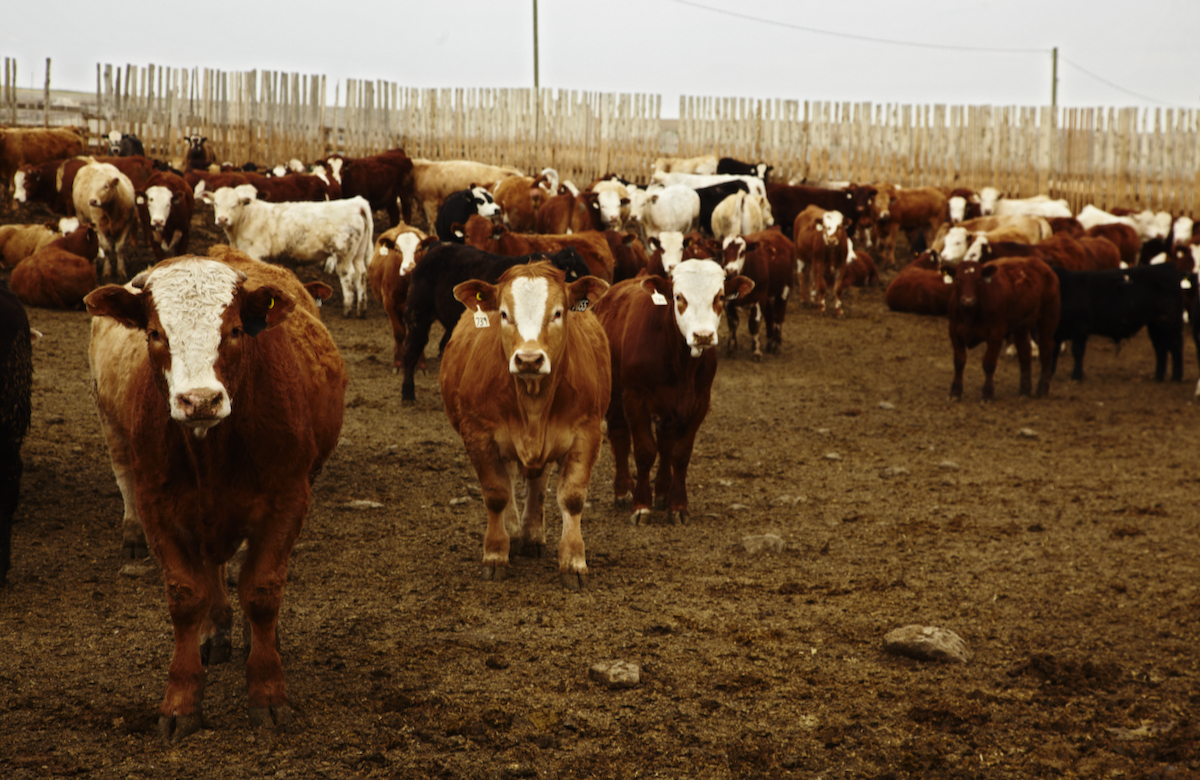Western Canadian feeder cattle prices were generally steady with week-ago levels as volumes continue to decline into the summer months. The quality of cattle coming on the market this time of year is quite variable.
Background operations are liquidating their final volumes and feeders over 800 lbs. set the market structure. Larger-frame mixed steers averaging 900 lbs. were readily moving at $165 while their sisters moved in the range of $160-$164. There was no stand-out demand from the U.S. or southern Alberta feedlots. Order buyers had a deck of interest about $5-$10 below the market, which limited the slippage, even on lower-quality cattle. The buying group was quite diverse, with all sizes of operations picking up smaller parcels. Spurts of buying interest came forward on the mid-weight categories as top-end mixed steers averaging 800 lbs. traded in the range of $190-$193.
Read Also

U.S. livestock: Cattle at fresh highs, hogs weaken
Cattle futures on the Chicago Mercantile Exchange climbed to fresh highs on Tuesday, as tight supplies and the ongoing closure…
On lighter weight categories, the market was quite variable. Larger-frame Simmental-based calves averaging 675 lbs. were quoted at $225 landed in southern Alberta; however, in central Alberta, 615-lb. mixed steers moved at $212. There is a fair amount of uncertainty for the fed cattle market in the third and fourth quarters but these prices are looking more profitable on the onset. Pastures are in excellent conditions and the farmer/cattle producer stepped forward more aggressively this week because this group has avoided the turmoil over the winter. Buying calves in spring and selling in the fall has been a financially healthy way to turn over forage the past few years.
U.S. away-from-home food expenditures experienced a year-over-year increase of nine per cent in April and the May final numbers could be as high as 12 per cent. Consumers are travelling at record levels and eating out fairly confidently. Wholesale beef prices have held value despite the surge in weekly beef production and carcass weights are declining on both sides of the border. The retail and restaurant markets appear to be absorbing the larger supplies. Alberta fed cattle prices were hovering at $160 this week. Feedlot margins are hovering near break-even, so the feeder market finally has some pretty good support at these levels.
— Jerry Klassen is manager of the Canadian office for Swiss-based grain trader GAP SA Grains and Produits. He is also president and founder of Resilient Capital, which specializes in proprietary commodity futures trading and commodity market analysis. Jerry owns farmland in Manitoba and Saskatchewan but grew up on a mixed farm/feedlot operation in southern Alberta, which keeps him close to the grassroots level of grain and cattle production. Jerry is a graduate of the University of Alberta. He can be reached at 204-504-8339.
















